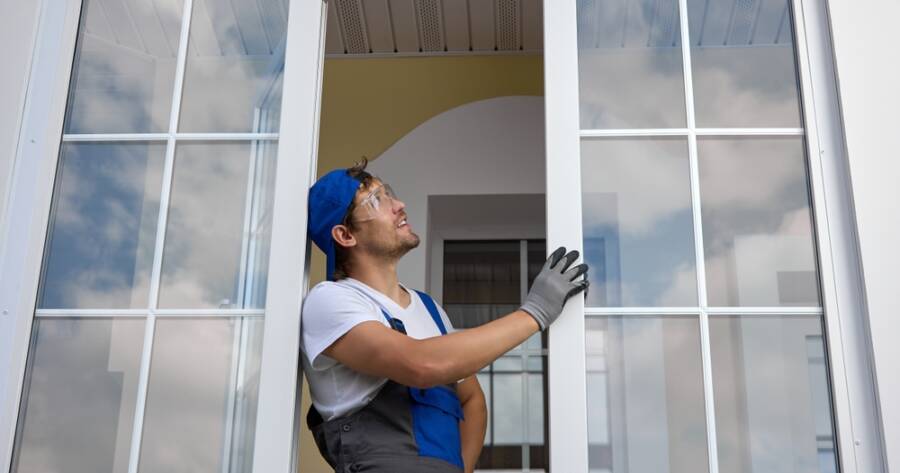Making your home more energy-efficient doesn’t have to be complicated or expensive. With a few simple upgrades, you can reduce your energy consumption, lower your utility bills, and create a more comfortable living environment. Whether it’s sealing drafts, switching to LED bulbs, or installing a smart thermostat, these easy improvements can make a big difference. By taking small steps toward energy efficiency, you can enjoy immediate savings while contributing to a greener, more sustainable future.
Seal and Insulate to Keep the Warmth In
One of the most effective ways to improve your home’s energy efficiency is by sealing and insulating key areas.1 Drafty windows, doors, and attics can allow warm air to escape in the winter and let hot air in during the summer, forcing your heating and cooling systems to work harder.
By applying weatherstripping to doors and windows and adding insulation to your attic and walls, you can significantly reduce energy loss. Additionally, caulking gaps and cracks around your home also help to keep the interior temperature stable. Not only does this make your home more comfortable, but it also leads to lower utility bills.
Upgrade to LED Lighting
Switching to LED lighting is one of the easiest and most cost-effective ways to reduce your home’s energy consumption. LED bulbs use up to 75% less energy than traditional incandescent bulbs and can last up to 25 times longer, making them a smart investment for any homeowner.2
LEDs are available in a wide range of colors and brightness levels, allowing you to create the perfect ambiance in any room while saving on electricity costs. Additionally, many LED bulbs are compatible with dimmer switches, giving you even more control over your lighting and energy use.
Install a Smart Thermostat
A smart thermostat is a simple upgrade that can have a big impact on your home’s energy efficiency. These devices allow you to set a heating and cooling schedule that aligns with your daily routine, ensuring that your HVAC system isn’t working overtime when it’s not needed.3 For instance, you can program the thermostat to lower the temperature when you’re away from home or sleeping and then warm up just before you return or wake up.
This smart temperature control not only increases comfort but also reduces energy consumption and costs. Smart thermostats can also be controlled remotely via smartphone apps, giving you the flexibility to adjust your home’s temperature from anywhere. With a small upfront investment, a programmable thermostat can provide significant savings and a more efficient home.
Switch to Energy-Efficient Appliances
Upgrading to energy-efficient appliances is a powerful way to reduce your home’s overall energy usage. Modern appliances like refrigerators, washing machines, dishwashers, and ovens are designed to use less electricity and water while delivering the same (if not better!) performance.
Look for appliances with the ENERGY STAR label, which indicates that they meet strict energy efficiency guidelines set by the U.S. Environmental Protection Agency. While these appliances may have a higher upfront cost, the energy savings over time can quickly offset the initial investment.
Improve Window Efficiency
Windows play a crucial role in your home’s energy efficiency, as they can be a major source of heat loss in the winter and heat gain in the summer. Improving window efficiency is key to maintaining a comfortable indoor temperature year-round. Consider upgrading to double-pane or triple-pane windows, which provide better insulation compared to single-pane windows.
Additionally, applying window film or installing energy-efficient window treatments like cellular shades can help block out unwanted heat and cold. If replacing windows isn’t an option, using draft stoppers and ensuring that window seals are intact can also make a noticeable difference.
Other Simple Energy Improvements to Consider
There are several other simple energy improvements that can further enhance your home’s efficiency. Installing ceiling fans, for example, can help circulate air and reduce the need for heating and cooling. Most ceiling fans come with a reverse option, allowing you to push warm air down during the winter months, making your heating system more effective.
Another often overlooked energy drain is phantom power consumption. Many electronic devices continue to draw power even when they’re turned off. Unplugging devices or using smart power strips can help eliminate this unnecessary energy use. Lastly, consider installing a clothesline for drying laundry. Air-drying clothes not only reduces energy consumption but also extends the life of your garments. These simple improvements are easy to implement and can lead to significant energy savings over time.4
Government Incentives to Help Cover Energy-Efficient Upgrades
When considering energy-efficient home improvements, it’s worth looking into government incentives that can help offset some of the costs. Many federal, state, and local programs offer rebates, tax credits, or low-interest loans for energy upgrades, such as installing insulation, energy-efficient windows, or solar panels.
These incentives are designed to encourage homeowners to invest in energy-saving improvements, making it more affordable to reduce your home’s carbon footprint. Before starting any major project, take the time to research available incentives in your area to see if you qualify for any financial assistance.
Learn More About Easy Energy Efficient Upgrades
Making your home more energy-efficient doesn’t have to be complicated or expensive. By exploring and implementing simple upgrades, you can significantly reduce your energy consumption and save on utility bills. Keep researching to discover which energy-efficient improvements are the best fit for your home and lifestyle. With the right changes, you can create a more comfortable, eco-friendly living space that benefits both your wallet and the environment.
